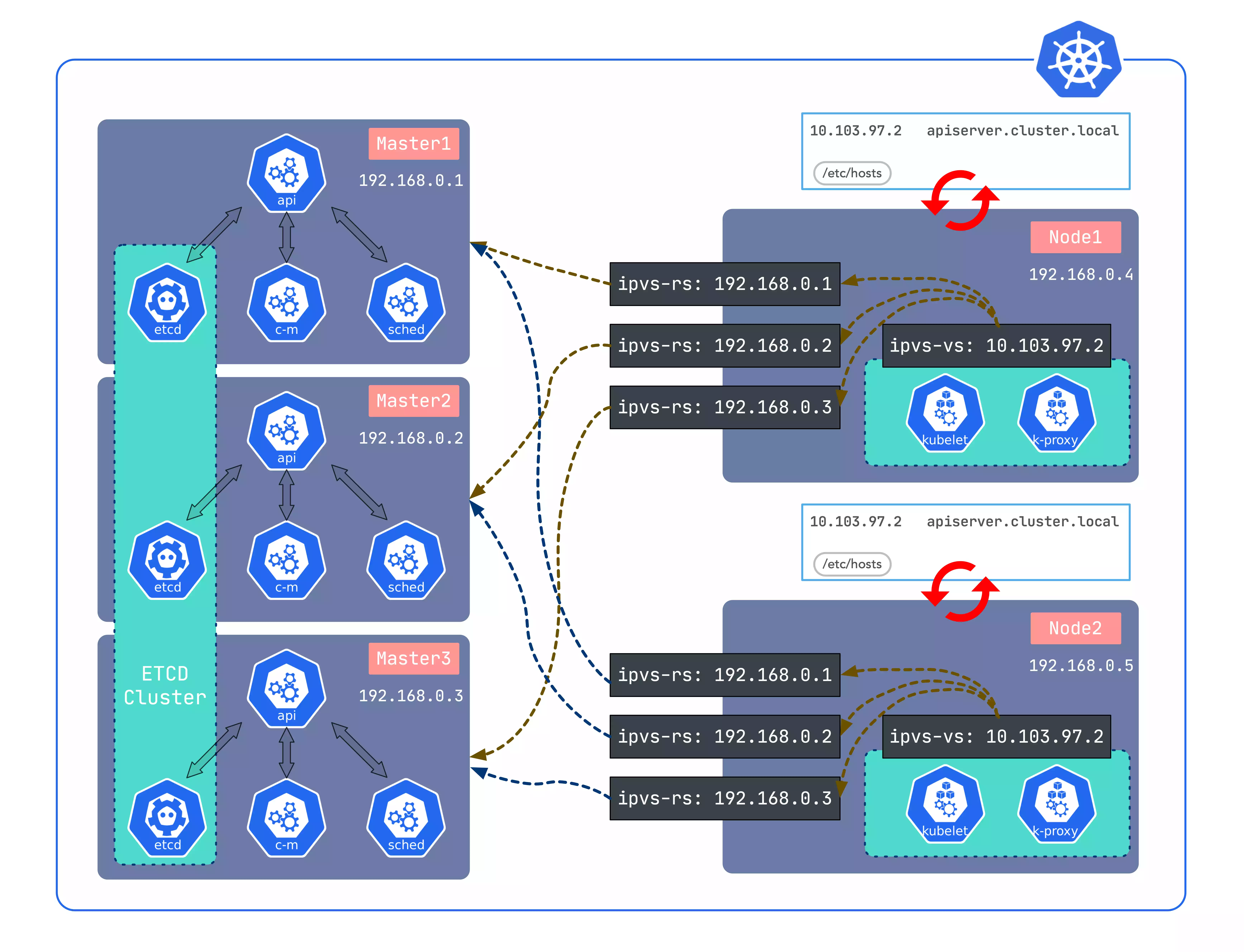LVScare User Guide
Introduction
LVScare is a lightweight load balancing and health checking tool based on IPVS technology. It provides real-time monitoring and management of backend services. Sealos, a cloud operating system, is a Kubernetes HA installation tool based on kubeadm that can be used to install and upgrade high availability Kubernetes clusters on any Linux system. When combined, Sealos and LVScare enable high availability of Kubernetes master nodes. Leveraging the lifecycle management capabilities of Sealos and the lightweight, zero-dependency, and high availability features of LVScare, it ensures the stability and reliability of Kubernetes clusters effectively.
How LVScare Works and Its Features
LVScare monitors the health status of backend services (real servers) in real-time using IPVS. If a service becomes unavailable, LVScare immediately sets its weight to 0 (for graceful TCP termination) and removes it from the service list during the next check. When the service recovers, LVScare automatically adds it back to the service list. This design of LVScare makes it lightweight, zero-dependency, and highly available. It occupies fewer resources, is stable and reliable, and similar to the implementation of kube-proxy, it can ensure the continuous availability of services through IPVS-based local load balancing.
Integration of Sealos and LVScare
In Sealos, we utilize the recommended approach of static pods to automatically configure and manage LVScare for achieving high availability of Kubernetes clusters. During the installation process of a Kubernetes cluster, Sealos automatically uses LVScare for health checking and load balancing of the master nodes. This means that even if one of the master nodes fails, it does not affect the overall functionality of the Kubernetes cluster.

Running LVScare as a Static Pod
First, use the sealctl static-pod command to generate the configuration for LVScare and place it in the
/etc/kubernetes/manifests directory. This allows all nodes in the Kubernetes cluster to access this configuration.
lvscare care --vs 10.103.97.12:6443 --rs 192.168.0.2:6443 --rs 192.168.0.3:6443 --rs 192.168.0.4:6443 --interval 5 --mode route
Generating and Adjusting Static Pod Configuration
To start LVScare on each node, we can use the following command to generate the configuration for the static pod:
sealctl static-pod lvscare --vip 10.103.97.2:6443 --name lvscare --image lvscare:latest --masters 192.168.0.2:6443,192.168.0.3:6443 --print
When there are changes in the master nodes, Sealos only needs to rerun the sealctl static-pod command to adjust the
master nodes, simplifying the logic of maintaining static pods. Before joining the cluster nodes, we need to manually
start the IPVS rules by calling sealctl ipvs (which directly calls the LVScare SDK) to maintain the IPVS cluster.
After the node joins successfully, Kubernetes static pods can take over the IPVS rules.
Advantages of Using LVScare
High Availability
By combining LVScare with Sealos, high availability of Kubernetes cluster master nodes can be achieved.
Health Checking Mechanism
The health checking mechanism of LVScare can promptly detect and handle issues, preventing them from causing larger problems due to the failure of a single node.
Seamless Integration
As a static pod in Seal
os, LVScare can seamlessly integrate with other parts of the Kubernetes cluster.
Simplified Operations
Sealos automatically configures and manages LVScare, greatly simplifying the operational tasks of the Kubernetes cluster.
LVScare Usage Example
Please note that all real servers need to listen on the same host and be set in "route" mode. Then, you can run LVScare in the foreground. For example:
docker run -p 8081:80 --name echoserver1 -d cilium/echoserver
docker run -p 8082:80 --name echoserver2 -d cilium/echoserver
docker run -p 8083:80 --name echoserver3 -d cilium/echoserver
lvscare care --vs 169.254.0.1:80 --rs 127.0.0.1:8081 --rs 127.0.0.1:8082 --rs 127.0.0.1:8083 --logger DEBG --health-schem http --health-path /
Cleanup
Finally, you can use the following command to clean up:
lvscare care --vs 169.254.0.1:80 --logger DEBG -C
Conclusion: LVScare is a lightweight load balancing and health checking tool based on IPVS. When seamlessly integrated with Sealos, it greatly improves the availability and performance of Kubernetes clusters. Give it a try and see how LVScare can help you better manage your Kubernetes cluster!